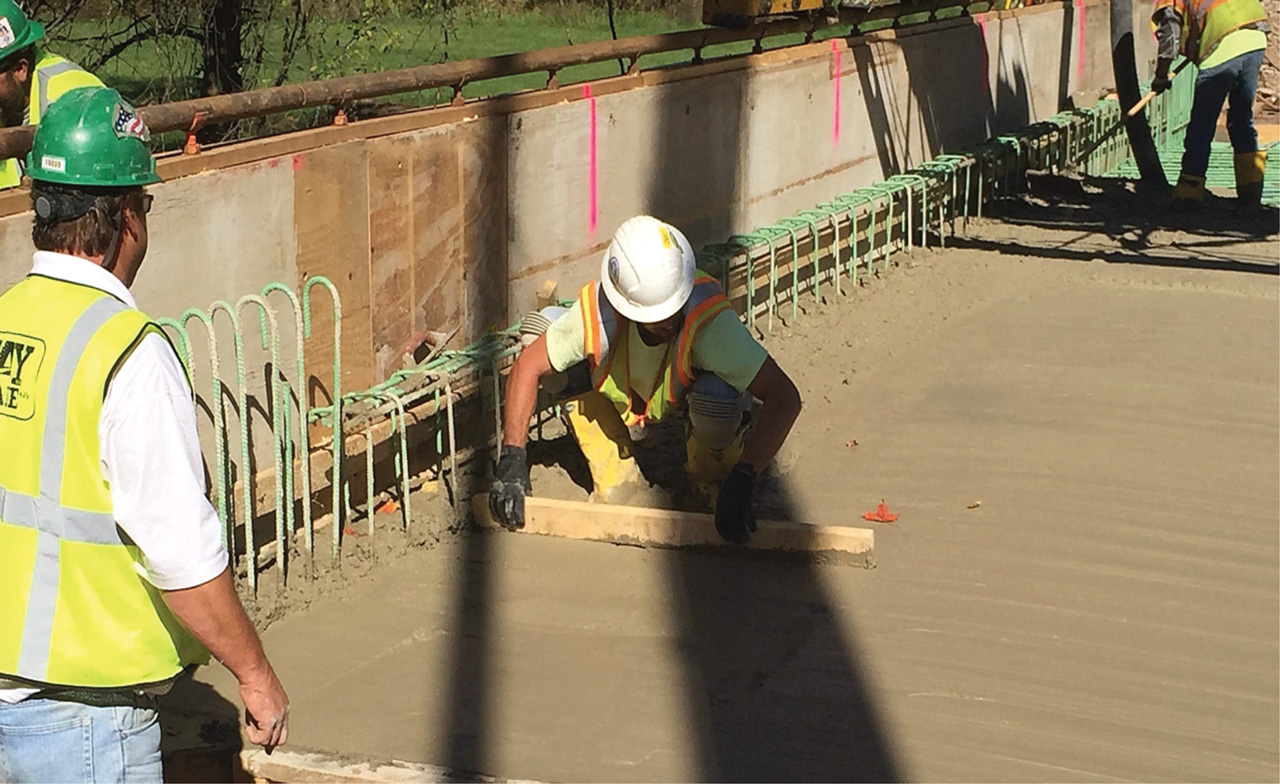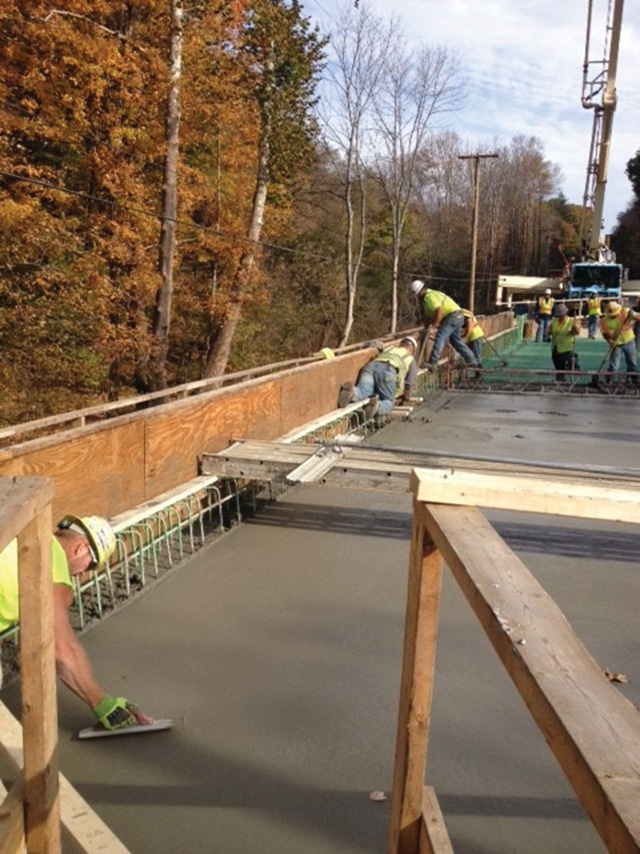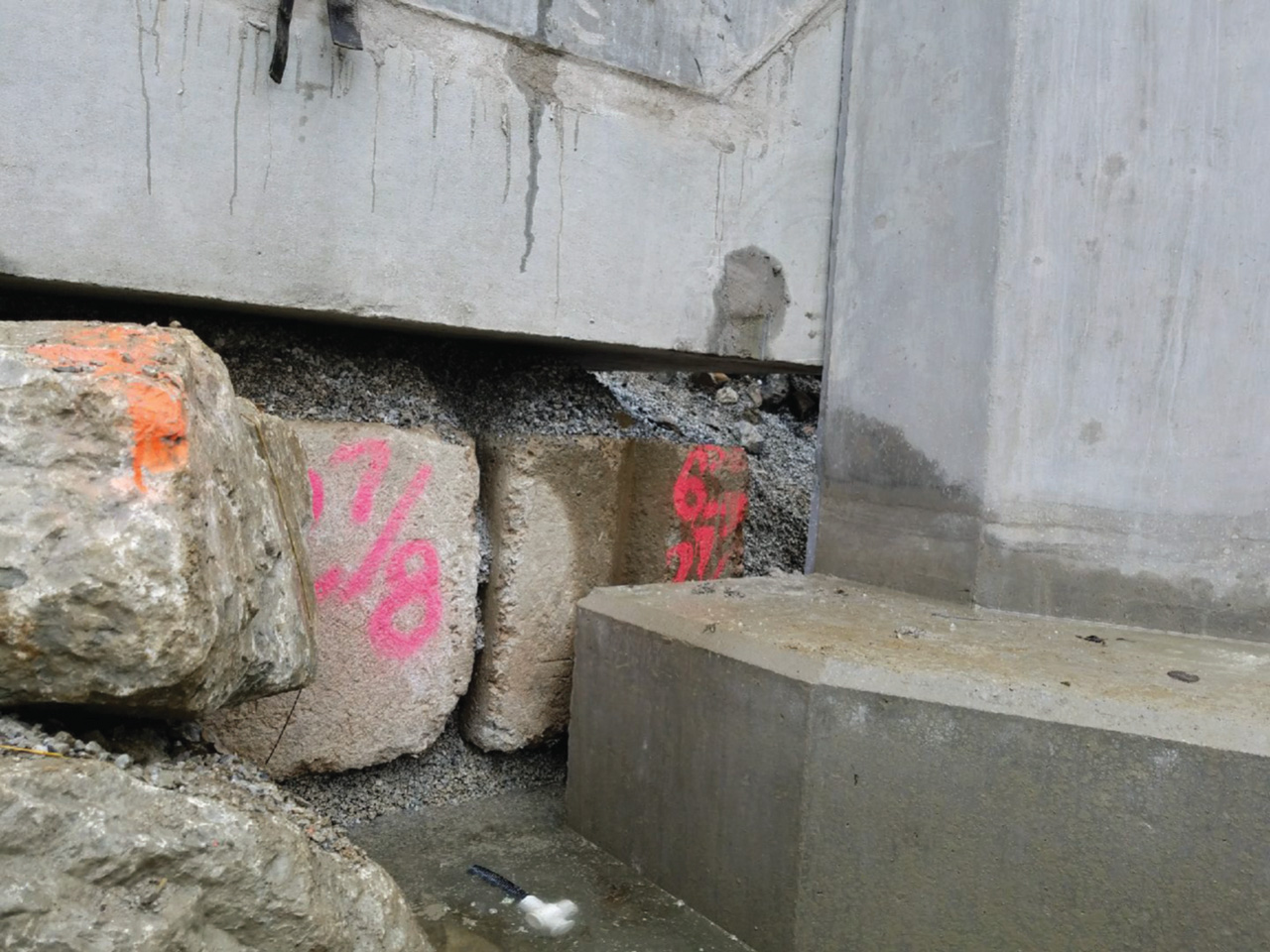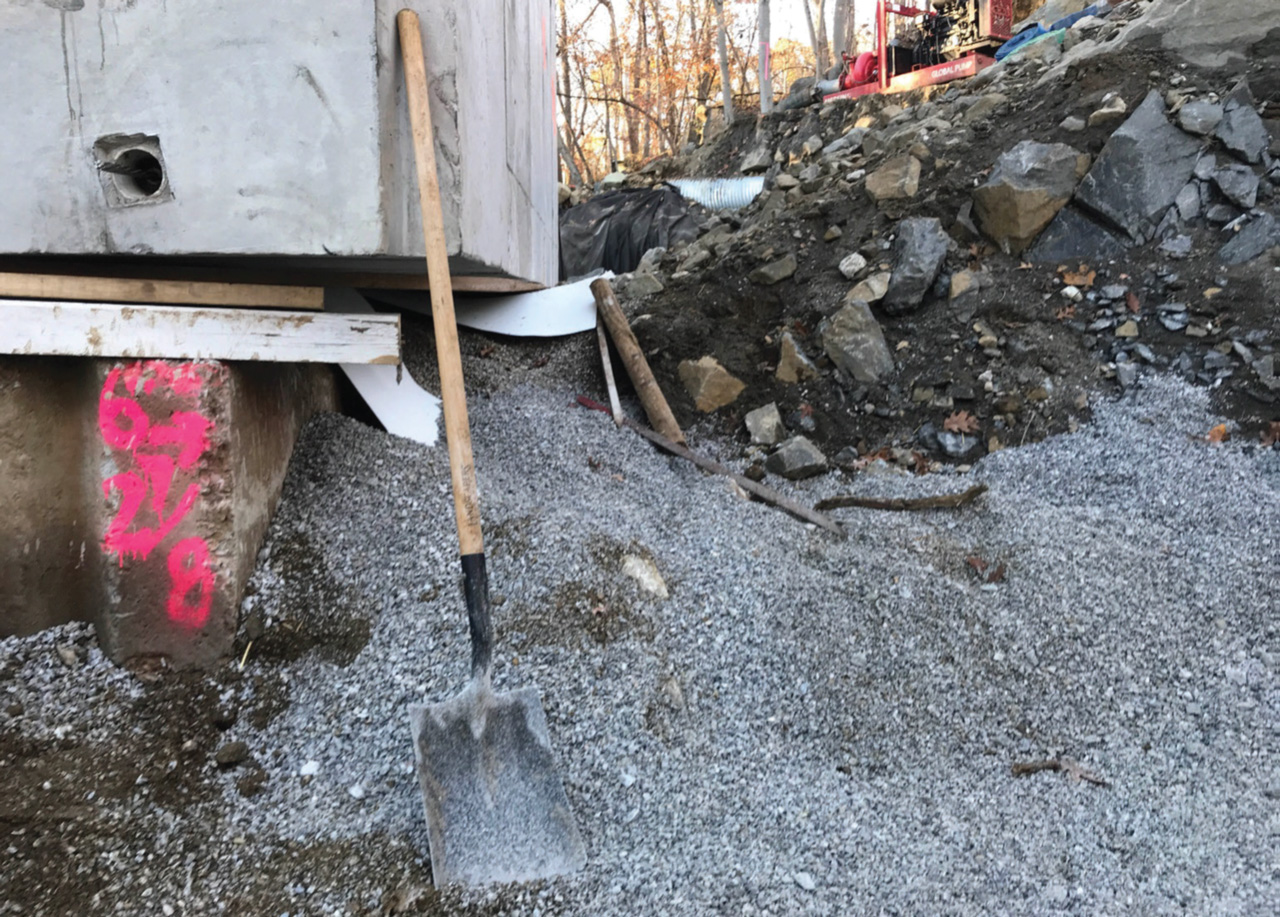Bridge construction differs greatly from other horizontal and vertical construction and thus involves targeted design and construction methodologies specific to the bridge type, size, and location. Transportation industries and other roadway users could suffer great economic losses when bridges at all levels of service are not well designed, constructed, and maintained. This article discusses bridge quality control through inspection.

Quality construction is achieved through the culmination of well-integrated design, construction, and inspection elements. Those elements include, at a minimum:
- Thorough investigation of the Construction Site to include sufficient geotechnical data required for the type of structure
- Clear and well-detailed construction plans, Owner’s Standards, and Construction Specifications, including Special Provisions for Special Situations, as well as:
- Construction Quality Inspection Processes for offsite production of construction materials and on-site labor conformance with the construction documents
- On-site sampling and testing of construction materials during placement, material curing, and timely loading of bridge elements are all integral to a successful project.
Workmanship and care during the performance of construction activities are decisive factors in the longevity or the premature failure of the project features (structural and non-structural). Rework or premature failure of material caused by incorporating material that does not meet the owner’s specification, costs, time, and money (typically absorbed by the contractor), delays and produces elements that are compromised to a certain extent.
Reference to the owner’s bridge construction standards must also be clear and include the proper version of the standards incorporated during the design. Large projects take longer to design while the owner continues to refine and update construction standards. Therefore, the contractor and inspection staff must ensure that the proper standards are used for the corresponding structural elements. Such standards provide for minimum and maximum dimensions, rebar clearances, bending, splicing, welding, material designation, and similar details.
Construction specifications and owner publications include:
- Construction methods
- Call out allowed materials, approved suppliers, various material specifications, the applicable testing methods, and acceptable result ranges,
- Sampling testing frequency of construction materials,
- Placement of certain equipment (such as concrete pumps and other delivery and finishing equipment),
- Material curing and loading strength of structural elements.
Such specifications must be followed and can only be substituted with the owner’s approval through proper and timely submittal of Requests For Information (RFIs). To ensure that contract documents are followed, the owner typically allows the Inspector in Charge (IIC) to accept minor deviations or material substitution based on their experience as the owner’s representative and years of experience in similar construction. Still, in most situations, changes/substitutions must be submitted to the owner’s engineer for concurrence BEFORE incorporation in the final product.

Examples of improper construction that can cause low quality: driven bearing piles in place of pre-drilled pile holes due to obstructions resulting in shallow and capacity-deficient pile foundation; driving foundation piles with the improper hammer size, min and max strokes, or an improperly operating hammer yield lower pile capacity than that called for in the construction plans; larger capacity hammers that may cause broken welds at pile splice locations; stopping a friction pile at a certain planned pile tip elevation without the proper dynamic and/or static load testing; not following the proper heat, number of passes, weld sizes, types, and the proper welding process in the case of field welding of structural components, driven piles, etc.

Properly documenting actual conditions validates adequacy in case of premature failure, etc. Examples of critical information include details of sampling, testing, placements of various elements, weather and site conditions during each activity, the various dimensions, sizes, clearances, and product names of materials used, the manufacturer’s name, type, size, and capacity of equipment used in specific activities.
Bridge foundations must meet or exceed the specified design capacity and be approved by the owner’s engineer; any suspect material (soil or rock) must be removed and replaced as approved by a geotechnical engineer. Allowing unprotected original foundation soils or highly decomposed/weathered rock (such as mica schist) subject to weather deterioration to remain without removal and replacement with suitable material of equivalent or higher capacity results in reduced foundation capacity.
The placement of precast elements and removal of support after post-tensioning are also critical elements for the inspection. Box culvert segments cannot be undermined once the foundation is placed, compacted, and the box segments are installed and post tensioned. Some plans call for the wing footer to be a few feet below the bottom slab; the overexcavation required to install the footer loosens and destabilizes the foundation materials causing the forces in the post-tensioning cables (designed to pull the box culverts tightly) to exceed the design forces. The resulting voids under the bottom slab can never be replaced and compacted to the required design foundation capacity.

Using epoxy rebar where the epoxy coating is damaged during handling or rework (removing and replacing concrete), especially in areas where moisture continuously exists or the concrete surface is subject to de-icing chemicals and other corrosive environments, will decrease the longevity of the epoxy coating and will allow rust to propagate throughout the reinforcement bars.
Other undesirable conditions include:
- Cold joints that are not per construction plans, especially in bridge decks and multiple-span continuous construction, must be avoided or re-evaluated by the design engineer. Keyed construction joints are very useful in areas where cold joints were not planned and cannot be avoided due to special circumstances.
- Multiple small pours vertically or horizontally in structural elements
- Incompatible paint layers in field painting of steel structures or not following required cure times to recoat cause premature failure of the paint system.
- Ignoring minimum and maximum air content, especially in colder regions, decreases the life span of concrete.
- Ignoring maximum water content and minimum/maximum slump limits leads to strength deficiencies and workability issues.
Early static loadings of bridge elements must not exceed specification-allowed loads, whether structural or not. Most bridge owners have minimum loading strengths for the various bridge components which must be followed unless waived by the owner. No existing or new bridge can be used to store materials or equipment unless approved by the owner after thorough analysis and approval of the loading plan by the owner’s engineers. If such plans were approved, the contractor must strictly adhere to the designated areas and stated loads with no deviations. Live loads must not occupy or traverse a new bridge deck until the deck has met the curing duration and the minimum required strengths specified by the owner.
All stakeholders must be committed to providing quality construction and working together to resolve issues efficiently without sacrificing quality for personal gains.■
